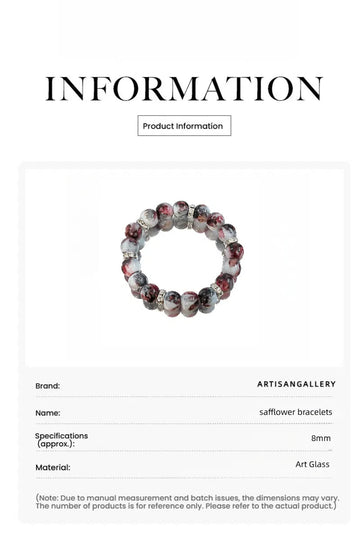Key Design Elements for Creating Elegant Stone Bracelets
Elegance in jewelry design often hinges on subtlety, balance, and timeless appeal. When crafting stone bracelets that exude sophistication, designers focus on harmonizing natural materials with refined details. Below are the essential principles to elevate stone bracelets into elegant, wearable art.
Selecting Stones with Understated Beauty
The foundation of an elegant stone bracelet lies in the choice of stones. Opt for varieties with soft hues, subtle veining, or translucent qualities that evoke a sense of calm and refinement. Moonstone, with its iridescent glow, or rose quartz, known for its delicate pink tones, are ideal for achieving a gentle, feminine aesthetic. For a more neutral palette, consider pearl-like stones such as white agate or opal, which add luminosity without overwhelming the design.
Avoid overly vibrant or heavily patterned stones, as they can disrupt the bracelet’s cohesive look. Instead, prioritize stones with natural inclusions or gentle color gradients that create depth without sharp contrasts. The goal is to let the stone’s inherent beauty shine through while maintaining a polished, sophisticated appearance.
Balancing Proportions and Silhouettes
Elegance often stems from simplicity, making proportion and silhouette critical in bracelet design. Choose a streamlined shape, such as a slender cuff or a delicate chain, to frame the stone without adding bulk. A single, statement stone set in a minimalist bezel or prong setting can serve as the focal point, while smaller accent stones or beads complement it subtly.
For layered designs, ensure each element is proportionate to the others. A bracelet featuring multiple stones should maintain a consistent scale, with the largest stone at the center and smaller ones tapering outward. This creates a visual hierarchy that feels intentional and balanced. Additionally, consider the bracelet’s width—a thinner band often reads as more refined, especially when paired with lightweight materials like fine silver or gold vermeil.
Incorporating Metallic Accents for Polished Finish
Metals play a pivotal role in elevating the elegance of a stone bracelet. Choose high-quality materials like sterling silver, 14k gold, or rose gold for their timeless appeal and durability. A polished metal finish adds a touch of luxury, while a brushed or matte texture can create a softer, more understated look.
When integrating metals, focus on clean lines and subtle details. A thin metal band with a single stone set in the center exudes modern sophistication, while a delicate chain interwoven with small stone beads offers a bohemian-chic vibe. Avoid overly ornate settings or clunky clasps, as they can detract from the bracelet’s refined aesthetic. Instead, opt for hidden closures or sleek toggle mechanisms that blend seamlessly into the design.
Emphasizing Texture Through Surface Treatments
Texture adds dimension to an elegant stone bracelet without compromising its simplicity. Consider stones with natural textures, such as druzy quartz or rutilated quartz, which feature tiny crystalline formations or needle-like inclusions. These details catch the light beautifully, creating a subtle sparkle that enhances the bracelet’s overall allure.
Metals can also contribute to texture through techniques like hammering, engraving, or filigree work. A hammered silver band adds a touch of artisanal charm, while engraved patterns—such as delicate leaves or geometric lines—can evoke a vintage-inspired elegance. When combining textures, ensure they complement rather than compete with each other. For example, a smooth stone paired with a textured metal band creates a pleasing contrast that feels both modern and timeless.
By focusing on understated stones, balanced proportions, refined metallic accents, and thoughtful textures, designers can create stone bracelets that embody effortless elegance. These pieces transcend trends, offering wearers a versatile accessory that enhances any outfit with a touch of sophistication.







